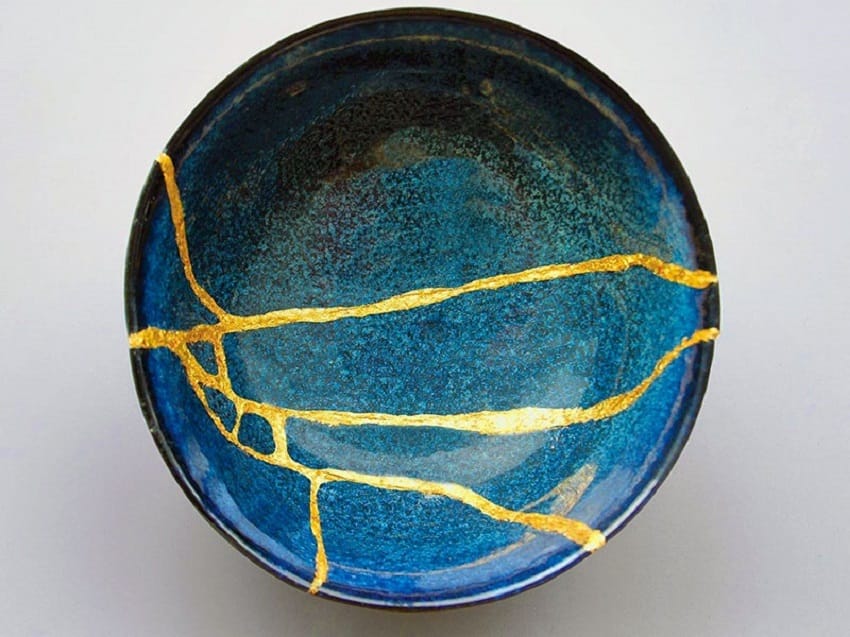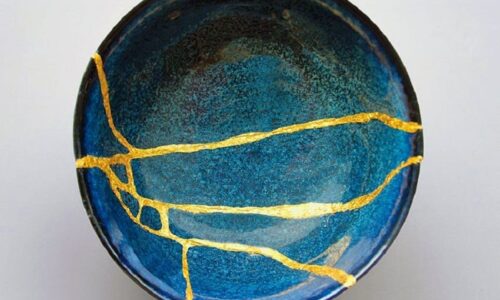
Kintsugi
- Inglese, kintsugi, Social sustainability, sostenibilità
- ArtofRepair, green, greeneconomy, kintsugi, kintsugirepair, repair, thinkpositive
- 25 Novembre 2022
Kintsugi: the art of imperfection
In Fight Club Tyler Durden addresses the protagonist by remarking “The things you own end up owning you”. This is not always the case.
A Japanese legend tells the story of the shogun Ashikaga Yoshimasa. He broke and had his favorite porcelain cup repaired, but it was held together by unsightly staples.
The Shogun was disappointed, although he could still use it. Hoping to restore it to its former beauty, he asked a craftsman to find a more elegant solution.
The value of an object lies in its imperfections.
He tried a new technique that would add instead of taking away, by inserting lacquered resin mixed with gold in each crack. When the shogun saw the cup, he believed that the golden stripes increased its value. This technique became known as Kintsugi – gold carpentry – and has been part of Japanese philosophy since then. According to these principles, the value of an object lies in its imperfections, which should not be hidden but celebrated.
This story teaches us something very valuable.
I find fascinating the idea of giving new life to objects that would otherwise end up being thrown away. In our consumer society, old means useless, and repairing an object seems like a waste of time and money. But it is not, and it is the same as buying little and well, going to the physical shop, avoiding the allure of being able to buy everything by clicking a button. This attitude helps us save money and pollute less. We might discover things that, isolated in our virtual world, we would end up ignoring.
There is a crack in everything. That’s how the light gets in.
And if you are not convinced, I invite you to reflect on something. How many times have we felt as broken as that bowl, unable to react, full of physical or spiritual scars? Sometimes we just need a kind word or a second chance to bring out our qualities.
Matteo Felici






zoritoler imol
I’d incessantly want to be update on new content on this internet site, saved to favorites! .